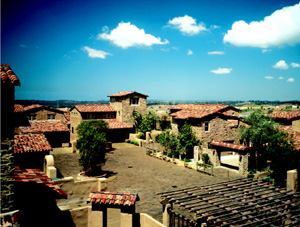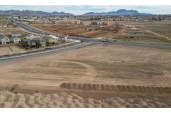The suburbs were over.
Millennials wanted none of them.
The post World War II bedroom community paradigm had run its course; and the Great Recession obliterated it, consigning the phenomenon of “sprawl,” at least one day, to a trash heap of urban planning miscalculations.
Except for one thing. The data. The data begs to differ. The data failed to fit the program.
No doubt, urban densification–and the inordinate economic, financial, political, and social cost of figuring it out so that people who already live in down-towns and cities can tolerate, even welcome, those who don’t yet do so–remains as housing’s Holy Grail. No doubt, too, that big changes in household composition and an ongoing structural shift from dominance by married-with-children households mean that urban living will be a lifelong preference for many. What’s more, jobs attract, and good jobs attract more, and if good jobs continue to gravitate to big cities, they’ll act as migrant talent magnets.
All that said, data from the latest Census County and Metro Area Population Estimates resoundingly support one conclusion that’s of critical importance to market-rate single-family residential developers and builders: greenfield land acquisition strategy has a future.
Two of the demographics world’s foremost experts on migration and mobility trends in the United States–Wendell Cox and William Frey–looked at the latest Census county and metro population patterns. Their respective take-aways leave no shred of doubt.
Brookings Institution fellow Frey writes in “US population disperses to suburbs, exurbs, rural areas, and “middle of the country” metros:
The Census Bureau’s annual county and metropolitan area estimates through 2017 reveal a revival of suburbanization and movement to rural areas along with Snow Belt-to-Sun Belt population shifts. In addition, the data show a new dispersal to large- and moderate-sized metro areas in the middle of the country—especially in the Northeast and Midwest. If these shifts continue, they could call into question the sharp clustering of the nation’s population—in large metropolitan areas and their cities—that characterized the first half of the 2010s.
Cox reaches an even more forceful refutation of “suburbs are kaput” theories that urban planners and pundits promoted just a few years ago. In the New Geography blog, Cox writes:
The 2017 population estimates show that there is a resounding “return to the suburbs,” with historical trends restored after a brief interlude caused by the Great Recession. At the same time, medium-sized metropolitan areas, with either small or no urban cores are gaining many more domestic migrants than their larger cousins. Regrettably much of the mainstream media, not to mention academia and some of the development community, has not woken up to this reality.
Further, demographer Cheryl Russell, editorial director of New Strategist Press detects similar changes in the new Census data, but through slightly different filters. She writes:
Average annual growth rates in smaller metro counties (rank 2 and 3) are increasing, while average annual growth is slowing in the largest urban counties. Some nonmetro counties saw their population losses turn to small gains in 2017 (rank 6 and 8). These emerging trends are signs that the economic recovery is increasingly widespread.
Of course this data, and the credibility of Cox, Frey, and Russell in their read on it, which suggests that–save the gyration that occurred, and could occur again, in population migration patterns in the wake of the Great Recession–America’s macro new geography trends support constructive fundamental residential real estate investment in Sun Belt, economically viable smaller metros, and suburban communities.
The underlying force here–the geographically ever-wider-cast net of economic improvement–matters for companies that sit astride suburban and urban infill rental and and for-sale market-rate residential development.
Clearly, these organizations wield greater leverage on land cost the farther into the periphery they go as they bring new neighborhoods online, first with raw and developed land buys, and then with entitlement and vertical development.
And land cost–versus land use policies that add to the price a buyer, developer, builder pays–is one of a home builder’s few options to “play offense” in the battle to make neighborhoods more affordable, more accessible to more Americans who pursue the Dream and are willing to work for it.



